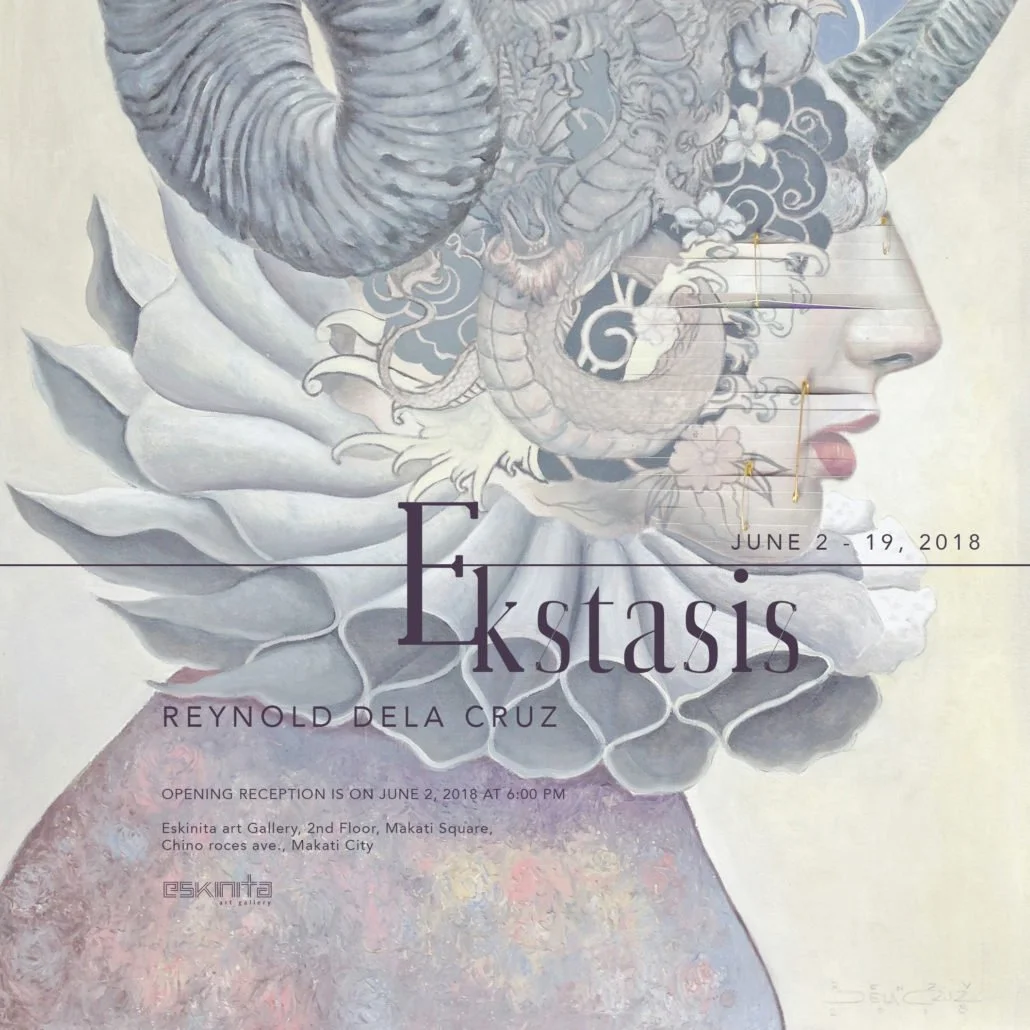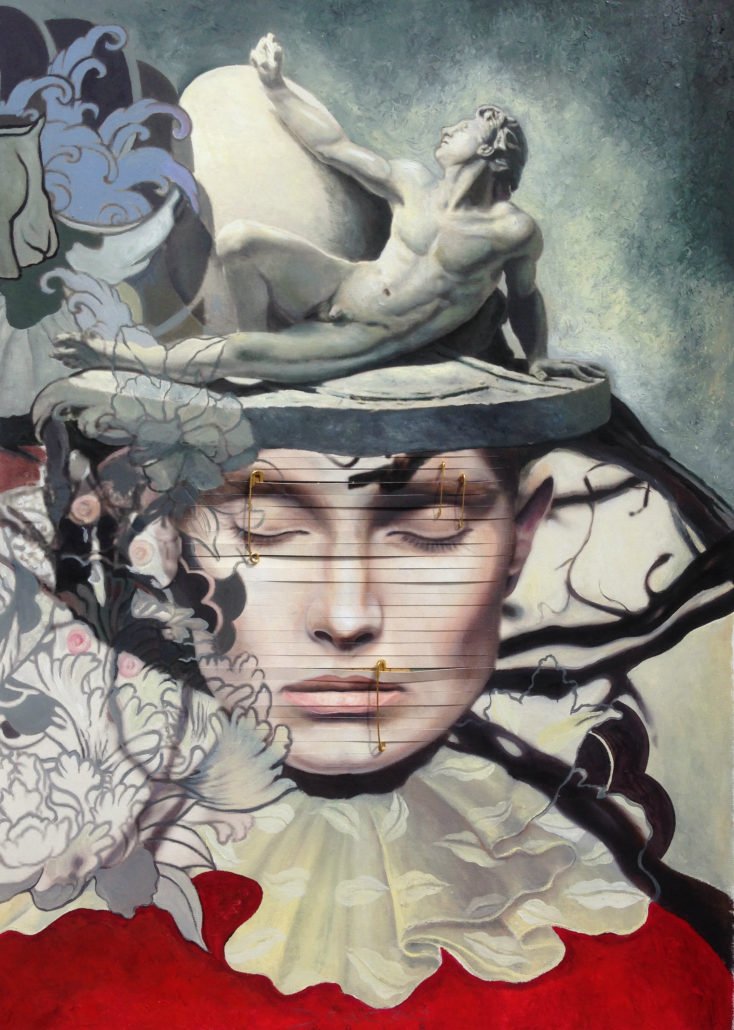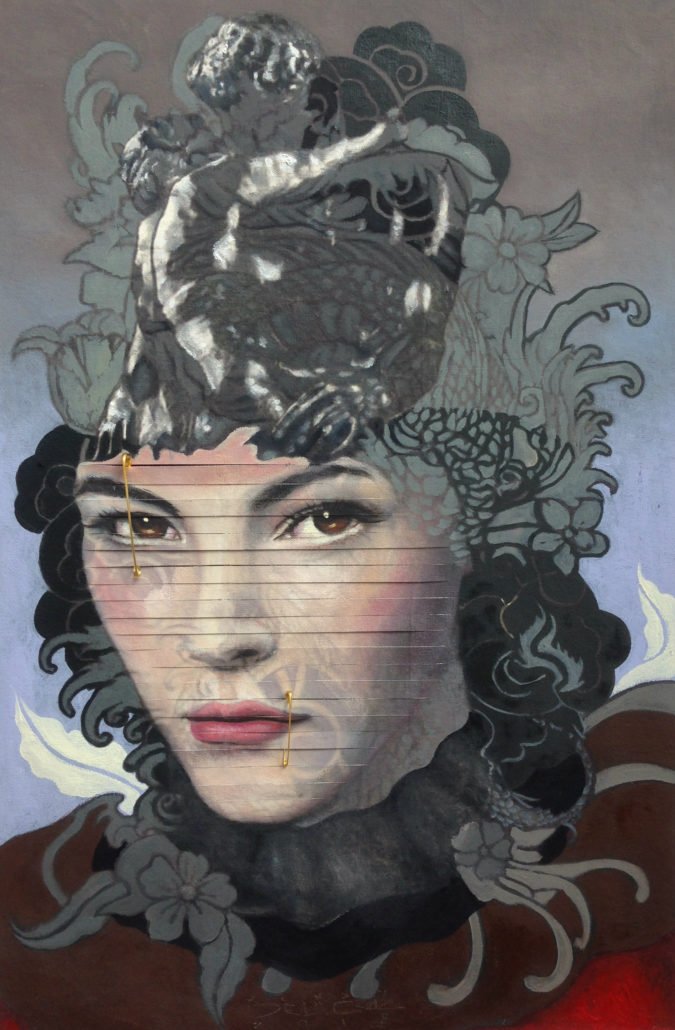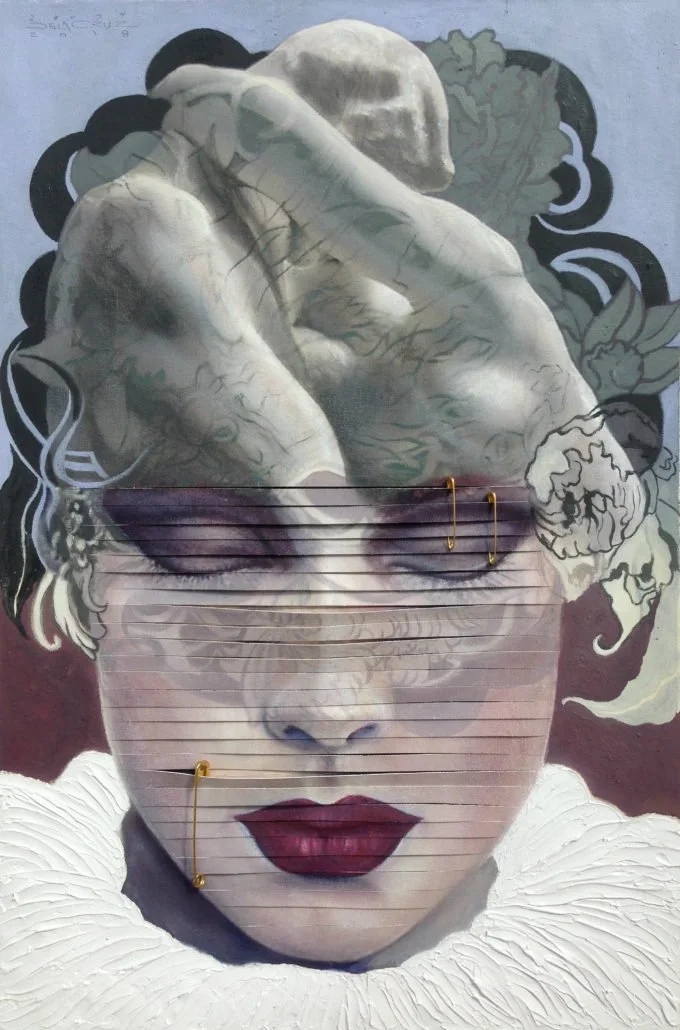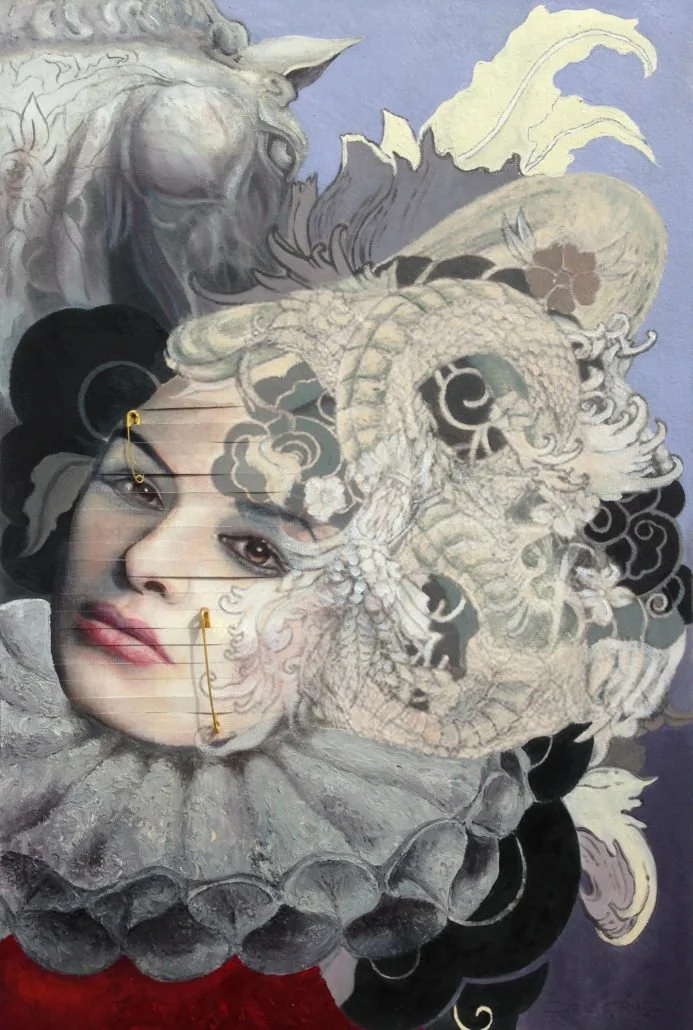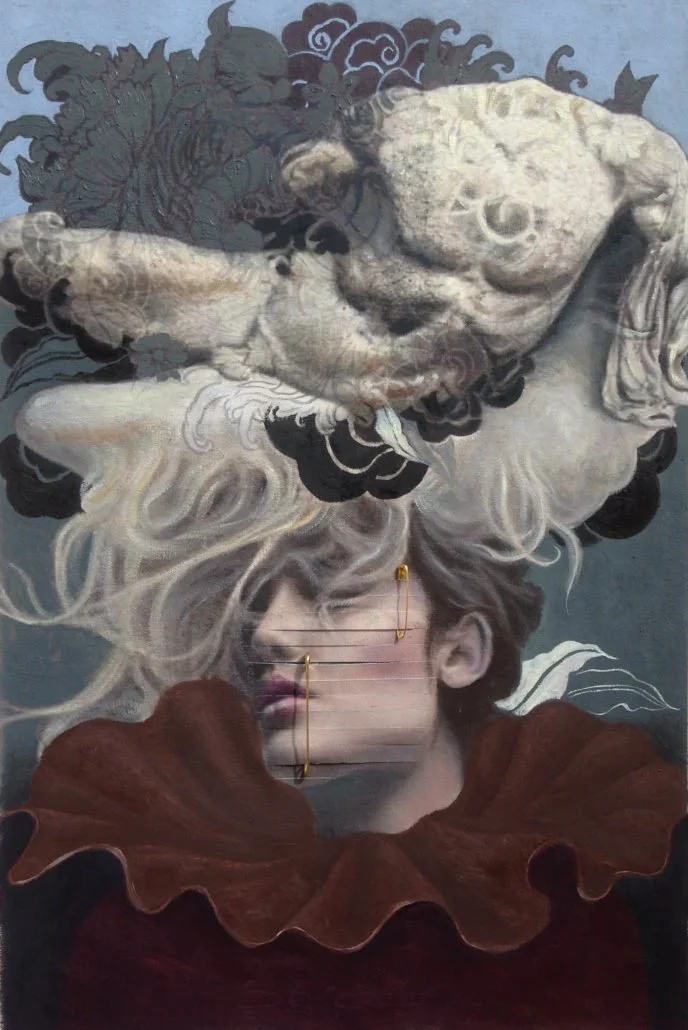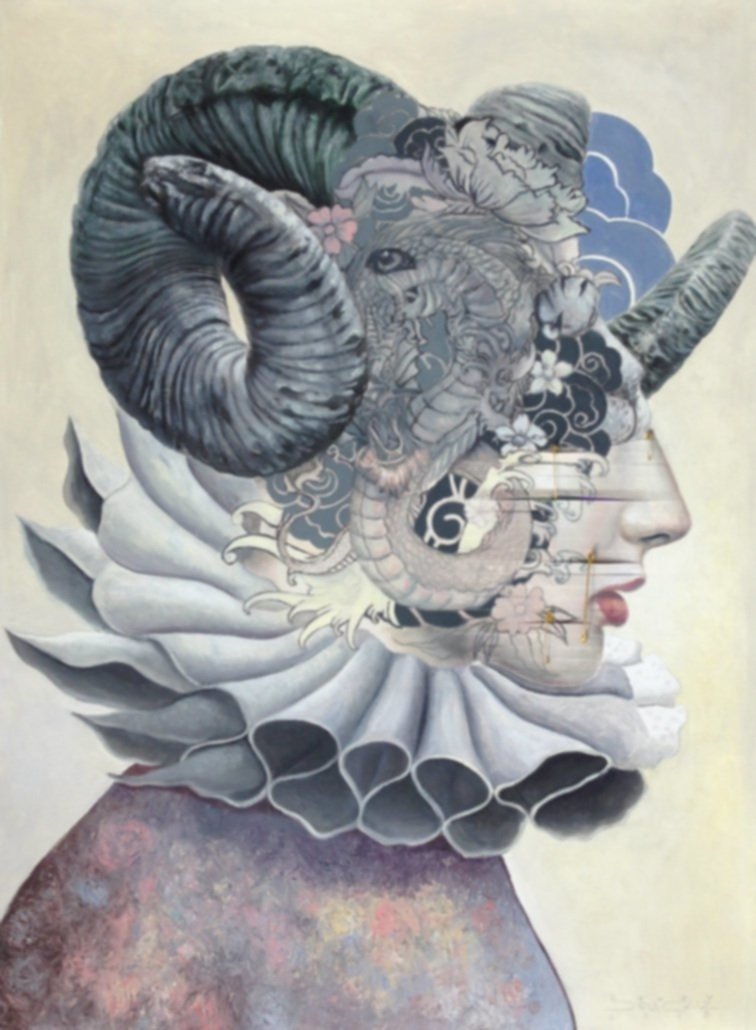
Ekstasis
Reynold Dela Cruz
June 2 to 19, 2018
In love, we experience ecstasy. We lose control of ourselves and tend to do things that are beyond our comfort zones. Ecstasy is derived from the Greek word Ekstasis, which means to stand outside of oneself. And when one experiences it, it means as if one is brought out of himself because of love or of the Other that he loves. In the works of Reynold dela Cruz, we find this overarching theme with the persistent usage of elements to tell stories and to seek understanding of this love that we speak of — how love empowers us to do the unthinkable, and how in its depth, complexity and intensity, we continuously gaze at it.
In this exhibit, we see the elusive appropriation of historical artworks infused in his paintings like Auguste Rodin’s “The Thinker,” as if to merge the past with the present. It is evident then as it is now. This raconteur that Love invokes a sense of reminiscence is a heed for longing. A primal human agency to long for the beloved, for a place where you belong, a place where you find acceptance in, and a place to call home.
Dela Cruz also conferred a significant value on the eyes of his subjects and its role in this exhibit’s theme. Eyes were perceived as a strong gateway to a person’s intentions. When we stand outside ourselves, conventions, and expectations, and look intently at someone’s eyes, we shall see nothing but a blank vacuum of nothingness. When we do perceive it as such, perhaps that’s when the Other reveals himself. And maybe that is also the true essence of love — when we see the Other not as a particular representation of something, but a proper human being truly manifesting itself and all its possibilities. Slicing the faces of his subjects through the canvas is also a unique technique that Dela Cruz is particularly fond of. This is his way of putting forward a step by step action to address the struggles in Love. Every step represents a particular struggle, and every safety pin is a depiction of recovery.
In another work, we’ll see the representation of Adam and Eve that hinges upon a perplexing question on truth, love, and eternal life. The artist was motivated on a saying that goes “I would rather live and love where death is king, than have eternal life where love is not,” posing a controversial issue on original sin. For good unknown sure is not had or had, and yet unknown, is not had at all. And more importantly, that love is more than unmindful obedience, and blind conformity. In its ecstasy and euphoria, it is a selfless active decision — dynamic and enduring.
-Karen Tesalona

